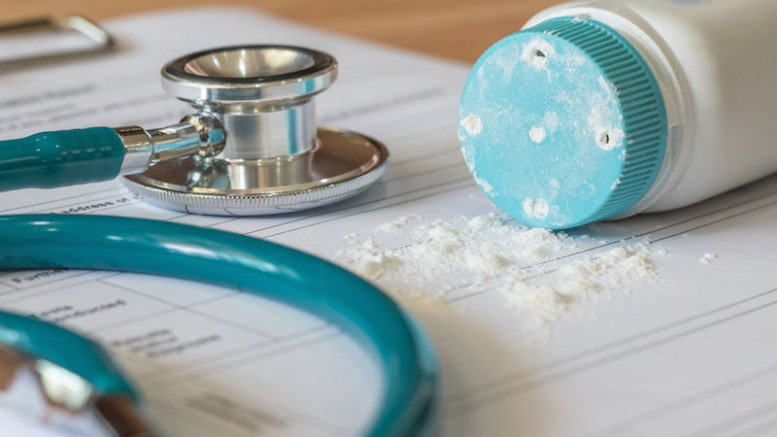The beauty and skincare industry sometimes care more about profit-making than the possible negative resultants of their products. Sadly, talcum powder, which is a staple cosmetic product for most families, is not excluded. Asbestos is a mineral product in talcum powder that has adverse effects on humans.
Despite its negative side effects, some manufacturers continue to add this toxic ingredient to talcum powders. Read on to find out about the hidden dangers of Asbestos in talcum powder.
What is Talcum Powder?
Talcum powder is derived from a mineral element called talc. Households favor talcum powder because it quickly absorbs moisture and reduces skin friction to maintain a dry and fresh smelling skin, free of rashes.
Even though people of all ages use talcum powder, its most prominent users are children and women. Besides talcum powder, talc is used in other cosmetic products such as creams, lipsticks, mascaras, make-up powders, foundations, deodorants, etc. though the content is more present in talcum powder than in any other cosmetic product.
What is Asbestos?
Asbestos refers to a group of six fibrous minerals that are mined for industrial purposes. The mineral is made up of soft and flexible fibers that are used in creating various human products. Notably, asbestos is resistant to heat and electricity; this is why it is commonly used as an insulator.
Asbestos is used industrially for cement, plastic, paper, clothing materials, ceramics, ceilings/roofs, fireproof products. This is to make the products effective and durable.
Its ability to keep surfaces dry by absorbing water explains why manufacturers favor it in cosmetic products like powders, mascaras, foundations, loose, and compressed powders.
Sadly, asbestos is just as toxic/harmful as it is useful. When digested or inhaled, the fibers get trapped in the body, causing health damage. This is why the use of asbestos is banned in so many countries. Nonetheless, some manufacturers have continued to use it in productions.
Talc and Asbestos
Talc and asbestos appear in similar or same geological formations, and this is why talc is sometimes contaminated by asbestos. Sadly, the asbestos from talcum powder in cosmetic and personal hygiene products has highly damaging impacts on the human body.
It is worth knowing that not all talc products contain asbestos; it mostly depends on the premises where the talc was extracted. It also depends on whether the manufacturers intentionally added a bit of asbestos to their product to make it more potent.
Besides, asbestos-contaminated talc has different grades/degrees of contamination. Some products contain just a mundane amount of asbestos, while others contain alarming amounts. Still, others contain a minimal amount of asbestos that has been refined further to exclude its harmful elements. The level of contamination has a direct relation with the degree of its negative impact on the body.
Hidden Dangers of Asbestos-Contaminated Talcum Powder
It has been established for a long while now that asbestos is highly toxic and harmful. It is known to cause several types of cancer, mesothelioma inflammations, difficulty breathing, scarring, among other things.
Now consider how disastrous this can be if used daily as a beauty or skincare product. Although talcum powder is often presented as a harmless beauty product, here are some hidden dangers that manufacturers won’t talk about.
Mesothelioma
Mesothelioma is the medical condition that results from exposure to asbestos. This medical condition acts as a form of tumor that affects the lining of body organs such as the lungs, kidney, and the abdomen.
When asbestos-contaminated talcum powder gets into the system, it could lead to the development of mesothelioma in the users’ body. In fact, some consumers have sued talcum powder manufacturers in times past concerning them developing Mesothelioma Lung Cancer from Asbestos and they got huge settlements from it.
Lung Cancer
Talcum powder, if inhaled, can lead to the development of cancer and other respiratory infections and diseases.
Talcum powder is usually rubbed over babies’ bodies to help prevent chaffing and rashes. Asides this, people of different ages use talcum powder either as make-up powder, rash-prevention powder, or even after-shave.
One way or another, sprays of the powder can find their way into the lungs through inhalation. Most times, the impact of the inhalation does not become apparent early on, but long-term use can foster the development of lung cancer.
Ovarian/Penile/Pancreatic Cancer
Some studies suggest that talcum powder could trigger risk in cancer types such as ovarian, penile, and pancreatic cancers in mature men and women. Most of the studies are of mixed results.
Still, the major suggestion is that the cancer types could develop when adults rub or spray the asbestos-contaminated powder over the body, particularly the genitals. The process is made even easier through the powder particles.
Skin Cancer
When the particles of the contaminated powder get into the skin, it remains in the skin, and this could trigger skin cancer cells. This is not limited to any age group; all age groups could be at risk of developing this if exposed to it. Most times, the exposure develops into full-brown cancer after a while.
Conclusion
There is no doubt that some talcum powder brands have asbestos in their products, nonetheless, there are still few that are asbestos-free. Considering the hidden dangers of using asbestos-contaminated powders, it is better to avoid brands that can’t validate that their talc products are asbestos-free.
Using asbestos-contaminated talcum powder exposes you to the risk of respiratory diseases and different types of cancer. Therefore, it is advisable to do your research before settling for any talcum powder. That way, you can avoid the dangers associated with contaminated powders.
